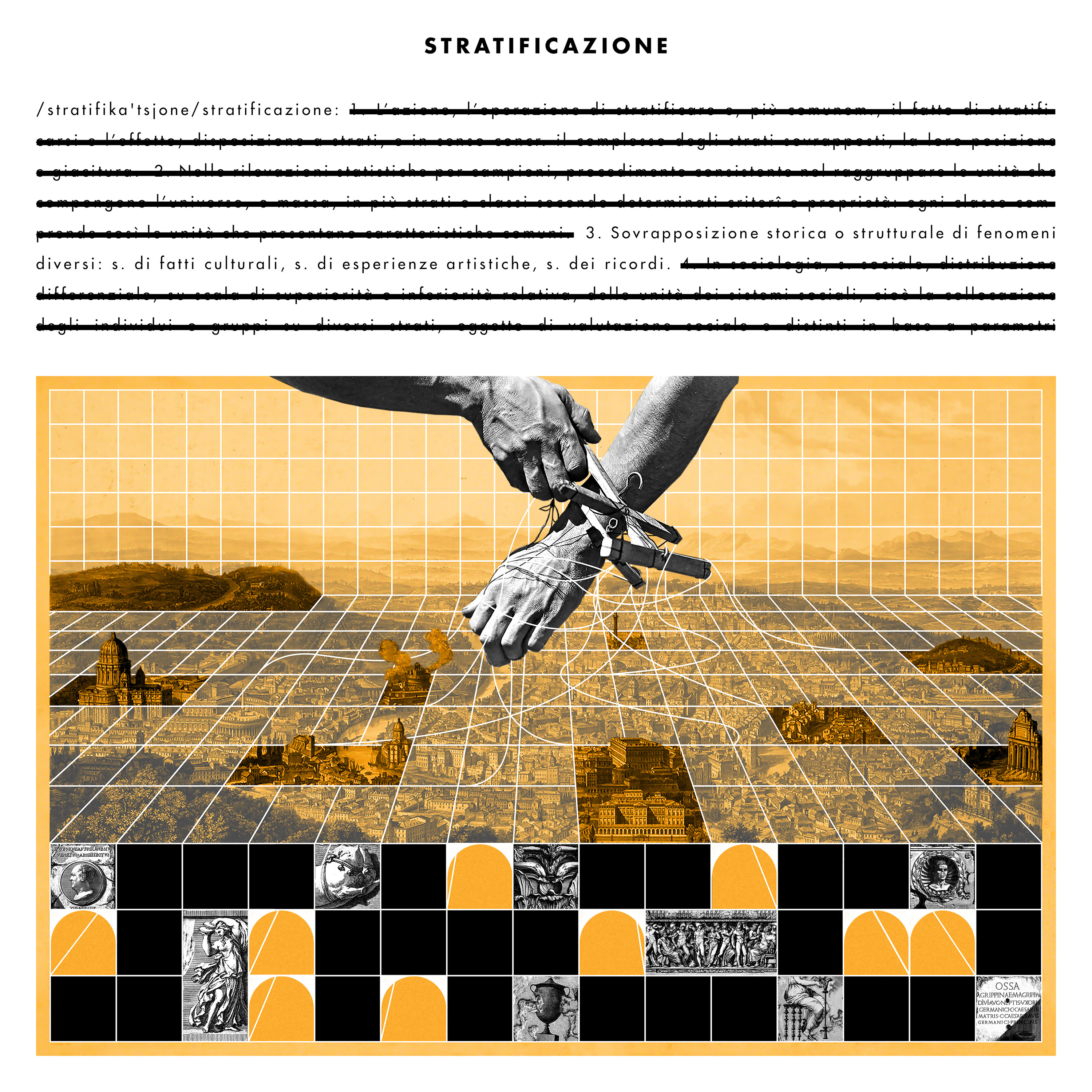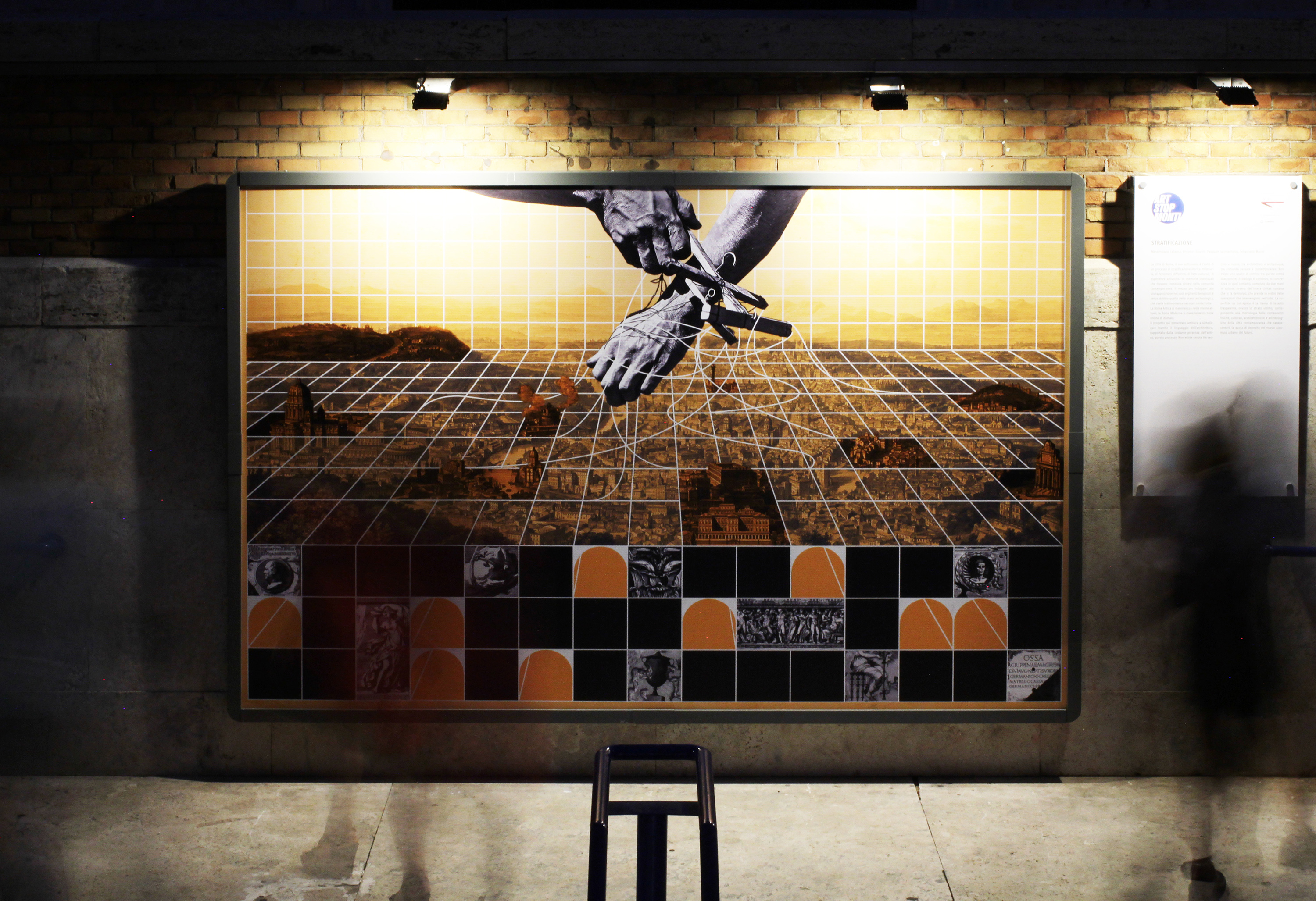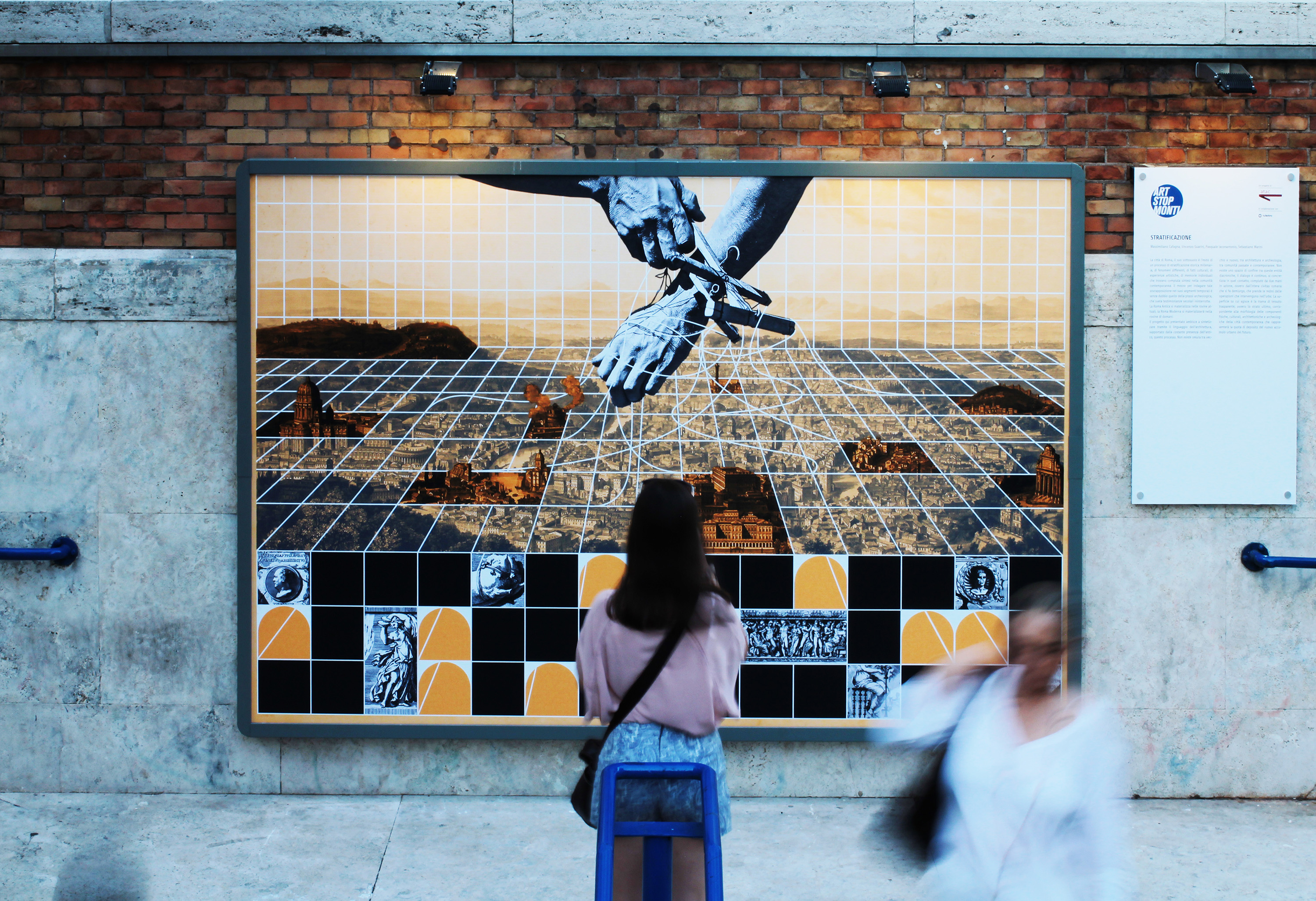ITA La città di Roma, il suo sottosuolo, è l’esito di un processo di stratificazione storica millenaria, di fenomeni differenti: di fatti culturali, di esperienze artistiche, di memorie individuali che trovano compiuta sintesi nella comunità contemporanea. Il mezzo per indagare tale sovrapposizione nei suoi segmenti temporali è quello della prassi archeologica, che svela testimonianze secolari ininterrotte, in cooperazione con la scienza architettonica che si fa disciplina storica, in uno scambio ricorrente tra progresso e conoscenza. L’azione dell’architetto che interviene per plasmare lo spazio, diventa a Roma l’anello di congiunzione in una continua alternanza tra sotto/sopra, vecchio/nuovo, passato/futuro. Non esiste cesura tra vecchio e nuovo, tra architettura e archeologia, tra comunità passate e contemporanee. Non esiste uno spazio di confine tra queste entità diacroniche, il dialogo è continuo, si concretizza in quel contatto, compiuto da due mani in azione, ovvero dall’intera civitas romana che si fa demiurgo, che prende le redini delle operazioni che intervengono nell’urbe. La superficie su cui agisce è la trama di tessuto trasparente, ovvero lo strato ultimo, corrispondente alla morfologia delle componenti fisiche, culturali, architettoniche e archeologiche della città contemporanea che rappresenterà la quota di deposito del nuovo accumulo urbano del futuro. Ciò che è sotto gli occhi di tutto, che interviene sulla “faccia a vista” presuppone un recupero consapevole dello strato sotterraneo, esito a sua volta di un processo di sovrapposizione, dall’andamento imprevedibile, ma indirizzabile.
ENG The city of Rome, its subsoil, is the result of a millenary process of historical stratification, of different phenomena: of cultural facts, of artistic experiences, of individual memories that find a complete synthesis in the contemporary community. The means to investigate this overlap in its temporal segments is that of archaeological practice, which reveals uninterrupted secular testimonies, in cooperation with the architectural science that becomes a historical discipline, in a recurrent exchange between progress and knowledge. The action of the architect who intervenes to shape the space becomes the link in Rome in a continuous alternation between below / above, old / new, past / future. There is no break between old and new, between architecture and archeology, between past and contemporary communities. There is no boundary space between these diachronic entities, the dialogue is continuous, it materializes in that contact, made by two hands in action, or by the entire Roman civitas that becomes a demiurge, who takes over the reins of the operations that intervene in the urbe. The surface on which it acts is the weft of transparent fabric, or the last layer, corresponding to the morphology of the physical, cultural, architectural and archaeological components of the contemporary city which will represent the deposit share of the new urban accumulation of the future. What is under the eyes of everyone, which intervenes on the "exposed face" presupposes a conscious recovery of the underground layer, the result in turn of an overlapping process, with an unpredictable but addressable trend.
CREDITS
Name: Stratificazione
Type: Research
Team: Massimiliano Cafagna, Vincenzo Guarini, Pasquale Iaconantonio, Sebastiano Marini
Year: 2017
ACHIEVEMENTS
Jun 2017 | Art Stop Monti - Open Call (competition - selected)
Powered by NU Factory & ATAC Roma
Rome, Italy
Jun 2019 | ARCHA - Visioni di Città (competition - selected)
Powered by Università degli Studi "Mediterranea", Facoltà di Architettura
Reggio Calabria, Italy
Sep 2019 | CFAD 2019: L'antico come opportunità per immaginare il futuro (competition - honorable mention)
Powered by Libray Illustrazioni



